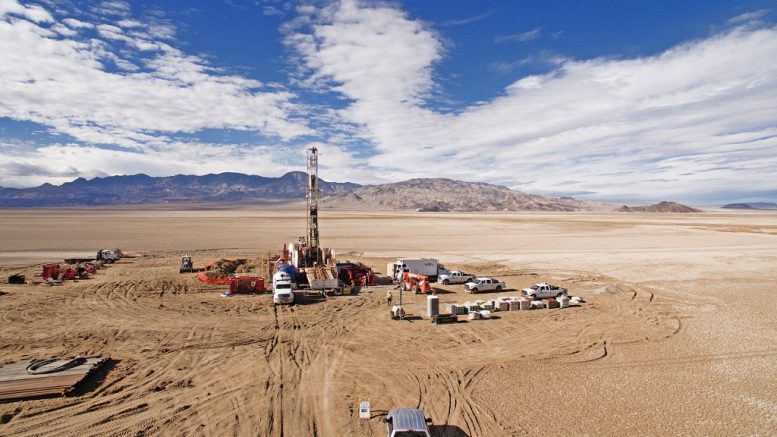The following is an edited excerpt from the World Exploration Trends report, released by S&P Global Market Intelligence. To see the full report, visit www.spglobal.com/marketintelligence.
Things are looking up for the exploration sector: global spending on the search for non-ferrous metals rose an estimated US$8.4 billion in 2017, compared with US$7.3 billion in 2016. This represented the first annual increase in exploration spending after four years of declining investment in the search for non-ferrous metals.
Our research documented stronger exploration throughout the year. Improved equity-market support for explorers — including many that were dormant during the downturn — helped companies launch or resume drill programs on their most promising projects. Although the focus was on gold, exploration targeting base metal assets also rebounded in the second half of the year. As a result, our measure of exploration sector activity reached levels not seen since early 2013.
In the last quarter of 2017 there was a sharp increase in reported drill results, and financings closed the year on a high note. With the positive trend in metal prices extending into early 2018, we expect the global exploration budget for 2018 will increase another 15% to 20% year-over-year, with emphasis on early-stage efforts. There are potential headwinds, however — such as ongoing instability in global and national politics, and emerging market volatility — that could have a negative impact, not just on exploration budgets, but on the mining sector in general.
Canada, Australia, US lead
The traditional top-three destinations for exploration spending — Canada, Australia and the U.S. — led again in 2017. With allocations totalling US$5.55 billion, the top-10 countries accounted for 70% of the US$7.95-billion global surveyed total. Budgets were recorded for 118 countries in 2017, on par with 119 in 2016.
Canada was first for the sixteenth straight year, with 13.8% of the global budget. But its lead over second-place Australia dwindled year-over-year to less than US$25 million. Ontario took 28% of Canada’s total, followed by Quebec at 21%. With gold allocations up 35% in 2017, the metal’s share of the Canadian total jumped to 62%, from 51% the year before.
Australia was a close second with 13.6% of the global budget. Western Australia, by far the most popular state, took 65% of the nation’s total. Gold was again the top target, with a 24% year-over-year increase raising the metal’s share of Australia’s budget to 59%, from 56% in 2016.

Data as of January 30, 2018. Source: S&P Global Market Intelligence.
Budgets for gold and copper exploration in the U.S. kept the country’s third-place ranking, with a 7.7% share. Nevada led with 47% of the U.S. total, and three states — Nevada, Arizona and Alaska — together accounted for 73%.
By region, Latin America was the most popular, with six countries — Chile, Peru, Mexico, Brazil, Argentina and Colombia — accounting for 91% of the region’s budget.
Gold was the top target for the third year in a row, garnering 44% of regional spending.
Our Rest of World group of countries, covering Europe and most of mainland Asia, was led by China and Russia, with allocations of US$387 million and US$336 million. Gold was the region’s top target for the third straight year.
Africa attracted 14% of the global budget, focused on the Democratic Republic of the Congo, Burkina Faso, Tanzania and South Africa. Continued interest in West Africa made gold the top target, with the metal’s share of regional spending jumping to 61% from 51% in 2016.
Gold drives exploration spending
Gold led the way to a higher global budget in 2017, accounting for 73% of the year-over-year increase. The precious metal’s US$4.05-billion allocation was 22% higher than 2016’s US$3.32 billion, increasing its share 3% to account for just over half of the global budget.
Base metals (copper, nickel and zinc-lead) were a distant second with 30%, followed by our Other Targets category at 13%. Allocations for uranium and diamonds each accounted for 3%, while platinum group metals accounted for less than 1%.
Battery metals exploration surges
Spurred by the growing demand for rechargeable batteries and a surge in battery metal prices, a number of junior companies shifted their exploration focus in 2017, dramatically increasing the spending on the search for cobalt and lithium. Our research found 136 companies budgeting almost US$157 million for lithium exploration in 2017, or more than double the 2016 total. Cobalt-focused exploration also jumped, with 52 companies allocating US$36 million in 2017 — more than four times the 2016 budget.
Since the first price surge in late 2015, many junior companies have raised funds for lithium-focused exploration or acquisitions. Among all company types, the juniors posted the only lithium budget increase in 2017 — a fourfold jump to US$128 million, nearly doubling their share of the global lithium exploration budget year-over-year to 82%.
The world’s largest cobalt producer, the Democratic Republic of the Congo, received one-quarter of the global cobalt exploration budget in 2017.


Be the first to comment on "Facts ‘n’ Figures: Global exploration spending on the rebound, study finds"